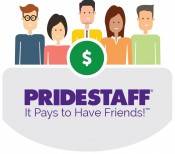Workplace conflict is inevitable.
In some cases, conflict is actually normal and healthy. Experts have found that the most effective teams are those in which members feel safe enough to “agree to disagree” with one another.
But, as noted by organizational psychologist Michael Woodward, “Unhealthy conflict is when it becomes personal and emotional. Then, your judgment gets clouded.”
As a leader, that’s when you need to step in and mediate. Your responsibility is to foster a work environment that consistently enables people to succeed and thrive, not feel threatened by conflict.
Conflict Affects Everyone Involved
Ignoring workplace conflict is costly. Unresolved, it festers under the surface and eventually reemerges, stronger and more potentially damaging than ever. It affects everyone in a department, team or working group – not just the employees who are directly involved. Stress is rampant; people feel like they’re walking on eggshells. They may take sides, resulting in widespread divisiveness.
How to Douse the Fire
Here are some guidelines to mediating and helping employees to resolve conflicts:
- Meet with the antagonists together. Set ground rules that require both parties to treat each other with mutual respect, as well as to listen and try to understand each other’s views.
- Let people know you will not take a side. Encourage them to tackle conflict resolution proactively, as adults. But be clear in stating if they are unable to do this, you will be forced to take disciplinary action.
- Practice active listening. This goes for you, as well as for the involved employees. Ask each participant to describe the conflict, including desired changes. Direct them to use “I” statements, versus “you” statements. Have them focus on specific behaviors and problems, rather than people. Coach them to wait for their turn to talk, and ask them to restate what others have said. This ensures mutual understanding.
- Brainstorm solutions. Discuss all the options in a positive manner. Rule out any that participants agree are not workable. Summarize all possible options for a solution, and then make sure both parties agree on next steps.
- Close the meeting on a positive note. Have employees shake hands, apologize and thank each other for working to resolve the conflict.
Conflict resolution can be one of the touchiest communication situations to master as a workplace leader. For additional resources, guidance and training, turn to the workforce development experts at PrideStaff Modesto. Read our related posts or contact us today to learn more.



